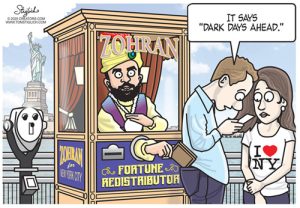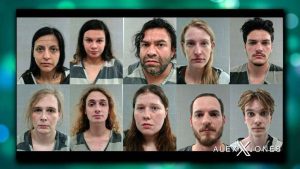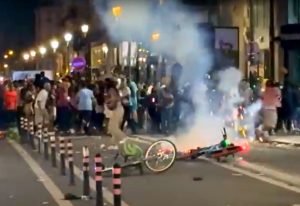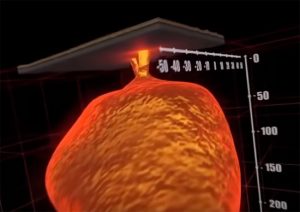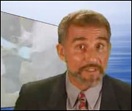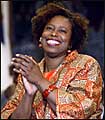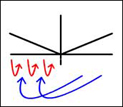The Astonishing Story of Nicaragua’s Anastasio Somoza
by Edward Ulrich
News of Interest.TV
updated November 30, 2022

President Somoza addressing more than seventy-five thousand supporters at a Nicaraguan political rally in 1978.
Among the most important autobiographies written during the 20th century is one that most people have never heard of, and it’s one that the globalist Establishment does not want people to know about. The book “Nicaragua Betrayed” is the engrossing behind-the-scenes account of the political career of Anastasio Somoza, the popular democratically elected leader of Nicaragua between 1967 and 1979, whose pro-U.S. government was overrun by Communist Sandinistas which the book proves were covertly supported by the globalist Establishment [note— “Council on Foreign Relations (CFR)”] associated with Jimmy Carter’s Administration. Somoza was assassinated in 1980 shortly after his book was published. The book is very important because it exposes the true agendas of globalism and how the Establishment global elite actually operate.
Anastasio Somoza spent most of his early life in the United States and graduated from West Point Military Academy in 1946. He loved the United States, and the structure of his government was entirely similar to the U.S. as a democratically elected constitutional republic, which allowed the same freedoms and potential for prosperity as the United States offered, including freedom of the press.
Somoza was a person of much integrity and resourcefulness, and his book explains through firsthand accounts his dealing with constant assaults on him and his free country by ultimately the most powerful political forces on the planet— the global elite Establishment during the Carter Administration. The book describes the Establishment covertly equipping Communist Sandinista militants through Castro’s Cuba against Nicaragua, engaging in nonstop slander attacks by the United States mainstream media against him (the book provides a wealth of evidence exonerating him from such slander), strong-arming adjacent Latin American countries against him, imposing embargoes and sanctions based on fraudulent claims, and infiltrating the churches of Nicaragua with [note— “Illuminati”] militant Communist Sandinista priests.
Even to this day, an agenda exits of leftist and Establishment news sources to create an avalanche of disinformation about Nicaragua, including making incorrect claims that Somoza was a tyrant and a corrupt dictator leading to him being overthrown by the Sandinistas, with extreme leftist sources even claiming that the Sandinistas who overthrew him as being a positive force for the people in that country. Such information sources will never mention the fact that the totalitarian Communist Sandinista FSLN government was installed by the Western Establishment as a part of a larger agenda to ensure that the Central American countries remain unstable and embroiled in deadly conflict and corruption— in order for the resource-rich reigon to eventually be consolidated by the global elite to take full control of it in an eventual imposition of a totalitarian New World Order.

The book covers a time period between 1959 and 1979. Topics described by Somoza include Nicaragua’s involvement with the “Bay of Pigs” invasion which show it being an intentionally failed attempt by the U.S. to overthrow Castro’s Cuba in 1959; also described is Somoza’s experiences directing the relief and reconstruction operations for a massive earthquake that destroyed Managua in 1972, how Somoza dealt with various high profile terrorist hostage situations, and how the U.S. covertly supported militant Communist Sandinista revolutionaries that increasingly infiltrated his country with the help of militant priests who gained influence using time-tested Marxist indoctrination methods.
Much of the book is dedicated to Somoza describing how it increasingly became apparent to him that the invading Sandinista activity was ultimately the result of covert United States activity through Castro’s Cuba, despite the fact that Somoza’s government was entirely pro-U.S. and modeled after the governmental system of the United States, including having freedom of the press that allowed extremist newspapers to publish articles criticizing him.
Somoza details the final years of his non-stop seemingly impossible successes in dealing with the onslaught of attacks that were ultimately initiated by the global elite— with his successes being due to the overwhelming support of the majority of the people in his country who understood the situation and pulled together to help push back the Communist Sandinistas; however trade embargoes covertly enforced by the U.S. combined with attacks by Sandinista militants pouring in from adjacent countries who were funded by the globalist Establishment eventually overtook the resources of Somoza’s free government, with many heroic and honorable individuals who understood what was at stake fighting until they ran out of ammunition, after which many of them were subsequently tortured and murdered.
In July 1979, Somoza was forced to resign the Presidency and eventually took refuge in Paraguay. He was assassinated in 1980 near his exile home shortly after his book was published.
Somoza’s autobiography is an important historical document because it illustrates the fact that Communist paramilitary groups in Central America which the United States is “exposed” in the mainstream media as waging covert wars against are actually themselves created and controlled by the Establishment global elite, often through the covert cooperation of Fidel Castro’s Cuba.
The totalitarian Communist Sandinista FSLN government that took over Nicaragua had direction and support from Castro’s Cuba, and shortly after taking power they massacred and imprisioned thousands of innocent people, implemented bans on free speech, and took land and property of the people of Nicaragua to be “redistributed.” Today Nicaragua is the second poorest country in the Western Hemisphere after Haiti.
As par for the course, in 1981 Ronald Reagan then condemned the FSLN for “joining with Cuba in supporting Marxist revolutionary movements in other Latin American countries such as El Salvador,” and authorized the CIA to form the “Contras,” which were made up of remnants of Somoza’s National Guard, to fight the Sandinistas— thus furthering a covert agenda of ensuring that Central America remains incapacitated in a condition of conflict and suffering, with the global elite being responsible for all aspects of the situation.
Start reading the chapter summaries for “Nicaragua Betrayed.” >>
Purchase the book “Nicaragua Betrayed” from Amazon.com.


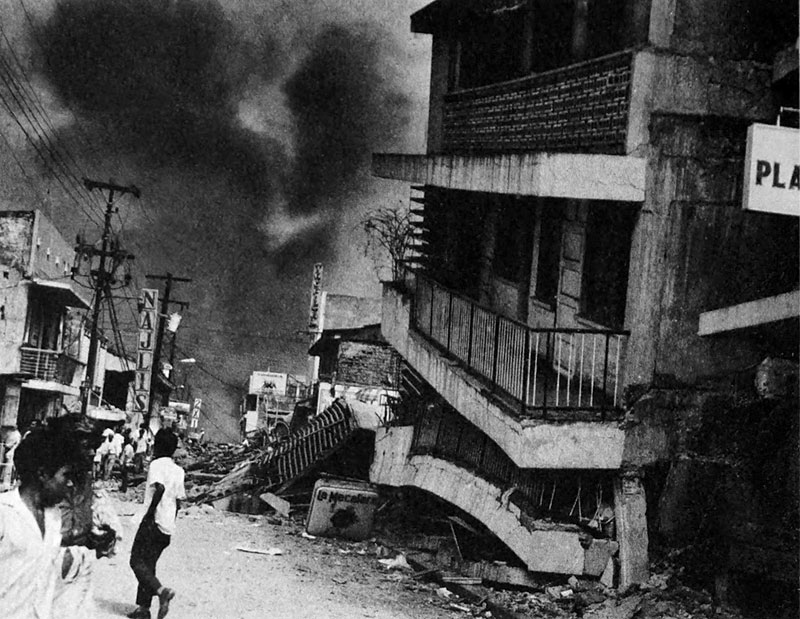


Chapter Summary Directory - “Nicaragua Betrayed”
[Editor’s Note: Updated September 3, 2020— While it is useful to read the following paragraphs that summarize each chapter, I highly recommended reading the actual full chapter summaries for each.
I would recommend at least reading the summary of Chapter 12 where Somoza explains Nicaracua’s role in the U.S. deliberatly causing the “Bay of Pigs” invasion of Cuba to fail in order to covertly ensure that Castro remained in power. It will give you a good taste of what the rest of the chapter summaries for the book are like.]
Chapter 1: The Tragedy of '72 — Earthquake
This chapter describes Anastasio Somoza’s efforts while being in charge of the relief and reconstruction efforts for the city of Managua after it was destroyed by a devastating earthquake in 1972. It is explained how his efforts were able to effectively manage the situation and head off potential ensuing chaos, despite efforts of corrupt political opposition including people associated with the U.S. government who attempted to use the disaster to slander and disempower Somoza’s efforts.
View the full chapter summary >>
Chapter 2: How it all Began
This chapter describes the beginnings of militant Communist Sandinista guerrilla activity in Nicaragua being due to infiltration of churches and universities as well as being due to information published by extremist newspapers; also described is agricultural programs Somoza implemented, his successful campaign for reelection to the Presidency, and a meeting he had with the President of Venezuela Carlos Andrez Perez.
View the full chapter summary >>
Chapter 3: Terrorism in Managua
This chapter describes a situation in 1974 where terrorists took a Christmas party hostage in Managua that had 45 people attending including many high ranking political figures as well as friends and family of Somoza, where the terrorists demanded money, the release of certain convicted felons, and passage to Cuba. Also explained is how some Sandinista Jesuit priests started a slander campaign in Washington to attempt to deprive Nicaragua of military assistance from the United States.
View the full chapter summary >>
Chapter 4: The Unexpected
This chapter describes how the U.S. took an isolationist attitude against Nicaragua after Richard Nixon’s Presidential Administration. Explained is how the U.S. sent a corrupt “Human Rights Commission” to Nicaragua during the Carter Administration that biased its findings for political reasons, and it is explained how friends of Nicaragua in U.S. Congress stood up for the truth and were able to reinstate military aid to Nicaragua that was being attempted to be cut off.
View the full chapter summary >>
Chapter 5: Heart and Other Trouble
This chapter describes Anastasio Somoza recovering from a major heart attack and preparing for Nicaragua to host an important “Army Chiefs of Staff of the Americas” meeting that was then boycotted by certain countries such as Venezuela at the covert urging of the U.S.; also described is a conversation with the then-president of Costa Rica Daniel Oduber who was also Somoza’s friend, where Oduber told him that he had a meeting with the U.S. White House National Security Advisor Robert Pastor who approached him and potentially other Presidents about overthrowing Nicaragua.
View the full chapter summary >>
Chapter 6: Sandino and the Sandinistas
This chapter explains a number of issues including the international mainstream media starting to attack Somoza while portraying Sandinista subversives in a positive light; an example is described of tactics used by Sandinistas in battle causing Somoza’s troops to be portrayed as being cruel and out of control; a summary of the history of the Sandinista movement is explained; and also explained is how militant Jesuit Priests indoctrinated young subversives against the government.
View the full chapter summary >>
Chapter 7: Brick Walls — U.S. Style
Issues explained in this chapter include how by late 1977, Managua turned into a “media circus” having an insatiable appetite for ever increasing sensationalism; how a Leftist Central American committee was formed to pressure countries against Somoza; the hypocrisy of Jimmy Carter’s endorsement of Panama; Congressional testimony by U.S. Army General Gordon Sumner who accurately identified the situation in Central America at that time; increasingly hostile communication being received from the United States; issues with a subversive group called the “Famous Twelve”; and Somoza’s announcement of plans to step down after his current term.
View the full chapter summary >>
Chapter 8: Pedro Joaquin Chamorro
This chapter describes Anastasio Somoza’s most well known nemesis Pedro Joaquin Chamarro, who published a Sandinista newspaper in Managua that called for violent revolution against Somoza and the government of Nicaragua. It explains how Chamarro was assassinated at the direction of a disgruntled business partner with the gunmen then being brought to justice— but with the international media still inaccurately accusing Somoza for his death, and with local adversaries of Somoza attempting to capitalize on the assassination but failing in their efforts.
View the full chapter summary >>
Chapter 9: The OAS and Deceit
This chapter describes escalations of attacks occuring in Nicaragua being staged from Costa Rica and Panama, and how a commission called the Organization of American States (OAS) was being unfairly exploited against Nicaragua at the direction of those countries as well as by the United States and Venezuela.
View the full chapter summary >>
Chapter 10: The Letter
This chapter describes a meeting Anastasio Somoza had with the President of Venezuela Carlos Andres Perez, who told Somoza that he is “too soft of a dictator” and essentially that he was going to overthrow him; also explained is the contents of a confidential personal letter Somoza received from Jimmy Carter that deceptively gave an initial impression of Carter being willing to be cooperative with him.
View the full chapter summary >>
Chapter 11: Terrorism in Managua: Phase Two
This chapter describes another terrorist hostage situation occuring in Nicaragua, this time happening at the National Palace in Managua with fourteen Sandinista gunmen holding as many as 1,500 people hostage including many of the members of the Nicaraguan Congress. The terrorists demanded that their “manifesto” be disseminated through the media, the release of 59 prisoners, ransom money, and their safe passage to Panama and Venezuela, where they were then welcomed as heros.
View the full chapter summary >>
Chapter 12: The Bay of Pigs— A Fiasco
This chapter describes the United States staging the “Bay of Pigs” invasion against Cuba from Nicaragua in 1961 while Somoza was chief of the Nicaraguan Army. It is explained how the United States intentionally caused the mission to fail by holding back key air support, resulting in Castro’s capture of eleven hundred prisoners and ensuring that Castro stayed in power.
View the full chapter summary >>
Chapter 13: September Offensive
This chapter describes false claims being made in the media of Anastasio Somoza losing support of the people of Nicaragua; also described is Somoza’s forces repelling many concurrent attacks by Sandinistas, and a description of shocking dishonesties that the Carter “Human Rights Commission” engaged in against Nicaragua.
View the full chapter summary >>
Chapter 14: The News Media and Jack Anderson
This chapter explains issues of bias in the news media concerning Somoza’s administration, including the fact that the media would not report atrocities associated with the Sandinistas, issues with Somoza being slandered by a U.S. newspaper columnist Jack Anderson and by the television show “60 Minutes,” and also issues with the shooting of the journalist Bill Stewart.
View the full chapter summary >>
Chapter 15: How Much More?
This chapter describes the Carter Administration trying another attempt at unseating Somoza by initiating a farcical “Multi-National Consultation on Nicaragua” negotiating team that included the United States, Dominican Republic, and Guatemala with only the U.S. actually making the decisions; where after rational attempts by Somoza to negotiate, he was given an ultimatum from Jimmy Carter: “You, General Jose Somoza, your son, and your families must leave Nicaragua forthwith.”
View the full chapter summary >>
Chapter 16: The Final Attack
This chapter describes massive assaults that Nicaragua endured in 1979 from thousands of well-armed troops pouring over the borders from Costa Rica and Honduras, which the Organization of American States (OAS) refused to sanction. The people of Nicaragua had the will to fight to protect their country, but supplies of ammunition were cut off by the United States along with other embargoes; and other Central American countries were pressured by the United States to sign a resolution that demanded that Somoza step down from the Presidency in order to empower the totalitarian Communist Sandinista government that was then installed.
View the full chapter summary >>
Chapter 17: Nicaragua Now— Color It Red
This chapter explains Nicaragua’s predicament after Anastasio Somoza had left the country. Somoza describes totalitarian Communists now ruling the country, his family newspaper being turned into the official voice of the Sandinistas, freedom of the press no longer existing in Nicaragua, many people fleeing the country, and how Communism is being spread to other Latin American countries.
View the full chapter summary >>
Chapter 18: The Tapes
Chapter 18 of “Nicaragua Betrayed” contains written transcripts of key conversations between Anastasio Somoza and U.S. representatives while negotiating toward the end of his Presidency. The tapes reveal that Somoza was given a guarantee by the U.S. of the preservation of the Guardia Nacional and that the people of Nicaragua would not then be subjected to a Marxist government. Somoza explains that every promise made to him in these sessions had been broken, and that the word of the United States no longer means anything.
NOTE: Refer to the chapter in the book for more information and text of the transcripts.
Chapter 19: A Time for Tears
This chapter explains Anastasio Somoza’s departure from Nicaragua and what happened immediately afterwards. Somoza resigned due to being promised that the Guardia Nacional and Liberal Party would remain intact, but instead those groups were imprisoned and had their property confiscated, with the same happening to many others in Nicaragua. Also described is how Major Pablo Emilio Salazar, known to all people of Nicaragua as the courageous “Comandante Bravo” was captured in Hondouras and then tortured and killed, with the murder being publicly gloated about by the Communist Minister of the Interior for Nicaragua Tomas Borge.
View the full chapter summary >>
Chapter 20: Betrayed
This chapter summarizes key points of specifically how the Jimmy Carter Administration delivered Nicaragua to a Marxist government which is closely associated with Fidel Castro’s Cuba.
View the full chapter summary >>
[Editor’s Note: Updated September 3, 2020— While it is useful to read the following paragraphs that summarize each chapter, I highly recommended reading the actual full chapter summaries for each.
I would recommend at least reading the summary of Chapter 12 where Somoza explains Nicaracua’s role in the U.S. deliberatly causing the “Bay of Pigs” invasion of Cuba to fail in order to covertly ensure that Castro remained in power. It will give you a good taste of what the rest of the chapter summaries for the book are like.]
Chapter 1: The Tragedy of '72 — Earthquake
This chapter describes Anastasio Somoza’s efforts while being in charge of the relief and reconstruction efforts for the city of Managua after it was destroyed by a devastating earthquake in 1972. It is explained how his efforts were able to effectively manage the situation and head off potential ensuing chaos, despite efforts of corrupt political opposition including people associated with the U.S. government who attempted to use the disaster to slander and disempower Somoza’s efforts.
View the full chapter summary >>
Chapter 2: How it all Began
This chapter describes the beginnings of militant Communist Sandinista guerrilla activity in Nicaragua being due to infiltration of churches and universities as well as being due to information published by extremist newspapers; also described is agricultural programs Somoza implemented, his successful campaign for reelection to the Presidency, and a meeting he had with the President of Venezuela Carlos Andrez Perez.
View the full chapter summary >>
Chapter 3: Terrorism in Managua
This chapter describes a situation in 1974 where terrorists took a Christmas party hostage in Managua that had 45 people attending including many high ranking political figures as well as friends and family of Somoza, where the terrorists demanded money, the release of certain convicted felons, and passage to Cuba. Also explained is how some Sandinista Jesuit priests started a slander campaign in Washington to attempt to deprive Nicaragua of military assistance from the United States.
View the full chapter summary >>
Chapter 4: The Unexpected
This chapter describes how the U.S. took an isolationist attitude against Nicaragua after Richard Nixon’s Presidential Administration. Explained is how the U.S. sent a corrupt “Human Rights Commission” to Nicaragua during the Carter Administration that biased its findings for political reasons, and it is explained how friends of Nicaragua in U.S. Congress stood up for the truth and were able to reinstate military aid to Nicaragua that was being attempted to be cut off.
View the full chapter summary >>
Chapter 5: Heart and Other Trouble
This chapter describes Anastasio Somoza recovering from a major heart attack and preparing for Nicaragua to host an important “Army Chiefs of Staff of the Americas” meeting that was then boycotted by certain countries such as Venezuela at the covert urging of the U.S.; also described is a conversation with the then-president of Costa Rica Daniel Oduber who was also Somoza’s friend, where Oduber told him that he had a meeting with the U.S. White House National Security Advisor Robert Pastor who approached him and potentially other Presidents about overthrowing Nicaragua.
View the full chapter summary >>
Chapter 6: Sandino and the Sandinistas
This chapter explains a number of issues including the international mainstream media starting to attack Somoza while portraying Sandinista subversives in a positive light; an example is described of tactics used by Sandinistas in battle causing Somoza’s troops to be portrayed as being cruel and out of control; a summary of the history of the Sandinista movement is explained; and also explained is how militant Jesuit Priests indoctrinated young subversives against the government.
View the full chapter summary >>
Chapter 7: Brick Walls — U.S. Style
Issues explained in this chapter include how by late 1977, Managua turned into a “media circus” having an insatiable appetite for ever increasing sensationalism; how a Leftist Central American committee was formed to pressure countries against Somoza; the hypocrisy of Jimmy Carter’s endorsement of Panama; Congressional testimony by U.S. Army General Gordon Sumner who accurately identified the situation in Central America at that time; increasingly hostile communication being received from the United States; issues with a subversive group called the “Famous Twelve”; and Somoza’s announcement of plans to step down after his current term.
View the full chapter summary >>
Chapter 8: Pedro Joaquin Chamorro
This chapter describes Anastasio Somoza’s most well known nemesis Pedro Joaquin Chamarro, who published a Sandinista newspaper in Managua that called for violent revolution against Somoza and the government of Nicaragua. It explains how Chamarro was assassinated at the direction of a disgruntled business partner with the gunmen then being brought to justice— but with the international media still inaccurately accusing Somoza for his death, and with local adversaries of Somoza attempting to capitalize on the assassination but failing in their efforts.
View the full chapter summary >>
Chapter 9: The OAS and Deceit
This chapter describes escalations of attacks occuring in Nicaragua being staged from Costa Rica and Panama, and how a commission called the Organization of American States (OAS) was being unfairly exploited against Nicaragua at the direction of those countries as well as by the United States and Venezuela.
View the full chapter summary >>
Chapter 10: The Letter
This chapter describes a meeting Anastasio Somoza had with the President of Venezuela Carlos Andres Perez, who told Somoza that he is “too soft of a dictator” and essentially that he was going to overthrow him; also explained is the contents of a confidential personal letter Somoza received from Jimmy Carter that deceptively gave an initial impression of Carter being willing to be cooperative with him.
View the full chapter summary >>
Chapter 11: Terrorism in Managua: Phase Two
This chapter describes another terrorist hostage situation occuring in Nicaragua, this time happening at the National Palace in Managua with fourteen Sandinista gunmen holding as many as 1,500 people hostage including many of the members of the Nicaraguan Congress. The terrorists demanded that their “manifesto” be disseminated through the media, the release of 59 prisoners, ransom money, and their safe passage to Panama and Venezuela, where they were then welcomed as heros.
View the full chapter summary >>
Chapter 12: The Bay of Pigs— A Fiasco
This chapter describes the United States staging the “Bay of Pigs” invasion against Cuba from Nicaragua in 1961 while Somoza was chief of the Nicaraguan Army. It is explained how the United States intentionally caused the mission to fail by holding back key air support, resulting in Castro’s capture of eleven hundred prisoners and ensuring that Castro stayed in power.
View the full chapter summary >>
Chapter 13: September Offensive
This chapter describes false claims being made in the media of Anastasio Somoza losing support of the people of Nicaragua; also described is Somoza’s forces repelling many concurrent attacks by Sandinistas, and a description of shocking dishonesties that the Carter “Human Rights Commission” engaged in against Nicaragua.
View the full chapter summary >>
Chapter 14: The News Media and Jack Anderson
This chapter explains issues of bias in the news media concerning Somoza’s administration, including the fact that the media would not report atrocities associated with the Sandinistas, issues with Somoza being slandered by a U.S. newspaper columnist Jack Anderson and by the television show “60 Minutes,” and also issues with the shooting of the journalist Bill Stewart.
View the full chapter summary >>
Chapter 15: How Much More?
This chapter describes the Carter Administration trying another attempt at unseating Somoza by initiating a farcical “Multi-National Consultation on Nicaragua” negotiating team that included the United States, Dominican Republic, and Guatemala with only the U.S. actually making the decisions; where after rational attempts by Somoza to negotiate, he was given an ultimatum from Jimmy Carter: “You, General Jose Somoza, your son, and your families must leave Nicaragua forthwith.”
View the full chapter summary >>
Chapter 16: The Final Attack
This chapter describes massive assaults that Nicaragua endured in 1979 from thousands of well-armed troops pouring over the borders from Costa Rica and Honduras, which the Organization of American States (OAS) refused to sanction. The people of Nicaragua had the will to fight to protect their country, but supplies of ammunition were cut off by the United States along with other embargoes; and other Central American countries were pressured by the United States to sign a resolution that demanded that Somoza step down from the Presidency in order to empower the totalitarian Communist Sandinista government that was then installed.
View the full chapter summary >>
Chapter 17: Nicaragua Now— Color It Red
This chapter explains Nicaragua’s predicament after Anastasio Somoza had left the country. Somoza describes totalitarian Communists now ruling the country, his family newspaper being turned into the official voice of the Sandinistas, freedom of the press no longer existing in Nicaragua, many people fleeing the country, and how Communism is being spread to other Latin American countries.
View the full chapter summary >>
Chapter 18: The Tapes
Chapter 18 of “Nicaragua Betrayed” contains written transcripts of key conversations between Anastasio Somoza and U.S. representatives while negotiating toward the end of his Presidency. The tapes reveal that Somoza was given a guarantee by the U.S. of the preservation of the Guardia Nacional and that the people of Nicaragua would not then be subjected to a Marxist government. Somoza explains that every promise made to him in these sessions had been broken, and that the word of the United States no longer means anything.
NOTE: Refer to the chapter in the book for more information and text of the transcripts.
Chapter 19: A Time for Tears
This chapter explains Anastasio Somoza’s departure from Nicaragua and what happened immediately afterwards. Somoza resigned due to being promised that the Guardia Nacional and Liberal Party would remain intact, but instead those groups were imprisoned and had their property confiscated, with the same happening to many others in Nicaragua. Also described is how Major Pablo Emilio Salazar, known to all people of Nicaragua as the courageous “Comandante Bravo” was captured in Hondouras and then tortured and killed, with the murder being publicly gloated about by the Communist Minister of the Interior for Nicaragua Tomas Borge.
View the full chapter summary >>
Chapter 20: Betrayed
This chapter summarizes key points of specifically how the Jimmy Carter Administration delivered Nicaragua to a Marxist government which is closely associated with Fidel Castro’s Cuba.
View the full chapter summary >>
”Last Plane Out” - Official Trailer
This trailer from the 1982 Hollywood movie “Last Plane Out” presents a representation of the chaos that ensued at the end of the Somoza Presidency when the Sandinistas took power. The film chronicles the journey of the journalist Jack Cox (who co-wrote Somoza’s book Nicaragua Betrayed) to Nicaragua when Somoza was battling insurgents.
[Note: Updated February 15, 2020— Claims of Jack Cox being killed while onboard the Korean Air flight 007 that was shot down over the Soviet Union in 1983 are not correct, as Cox had authored the book ”Requiem in the Tropics” in 1987. However, it is true that onboard that flight was the U.S. Congressman Larry McDonald who was the President of the John Birch Society. McDonald was staunchly anti-Communist and communicated the truth about Communism being covertly controlled by the global elite.]
”Nicaragua: An Unfinished Revolution” - Part 2 (Note: This is a “disinformation” video)
This documentary presented on the (covertly CIA associated) Al Jazeera television network in 2009 supplies common extreme leftist disinformation about the Sandinista political revolution in Nicaragua that overthrew the democratically elected pro-U.S. leader Anastasio Somoza. The documentary reinforces the official view of the Sandinista rebels as being “courageous adversaries of Washington” who stood up against the U.S. and won, and suggests that the Sandinistas are a “positive force” for the country despite criticizing them. The video then details the official view of how the U.S. then needed to “intervene” to stop the Sandinistas in 1982 by empowering the Contras against them, however in reality much proof shows that both the Contras and the Sandinistas are controlled by the same global elite as a part of a larger strategy of destabilizing Central America for eventual globalist ulterior motives of consolidation of those countries under a totalitarian New World Order.
The Assassination of Anastasio Somoza in 1980
From a Wikipedia article detailing Anastasio Somoza, taken February 2, 2011:
Somoza was assassinated near his exile home on September 17, 1980. He was 54 years old. Somoza Debayle was ambushed by a seven-person Sandinista commando team (four men and three women). ...
 The Sandinista team had two Soviet-made machine guns, two AK-47 assault rifles, two automatic pistols, and an RPG-7 rocket launcher with four anti-tank grenades and two rockets. ... One of the team members said: “We cannot tolerate the existence of millionaire playboys while thousands of Latin Americans are dying of hunger. We are perfectly willing to give up our lives for this cause.”
The Sandinista team had two Soviet-made machine guns, two AK-47 assault rifles, two automatic pistols, and an RPG-7 rocket launcher with four anti-tank grenades and two rockets. ... One of the team members said: “We cannot tolerate the existence of millionaire playboys while thousands of Latin Americans are dying of hunger. We are perfectly willing to give up our lives for this cause.”
For over six months the Sandinista assassins researched and planned their assault. The team meticulously studied Somoza’s movements with a team member who was staked out at a newspaper kiosk near the estate. They waited in ambush for Somoza in Avenida España. Somoza was often driven about the city in a presumed unarmored Mercedes-Benz S-Class sedan. Team member Oswaldo, disguised as a paper boy, watched Somoza exit the estate and signaled when he was leaving at 10:10 A.M.
Once in position, Hugo Irarzun (El Capitán Santiago) readied the RPG-7. He tried to fire an anti-tank rocket at the car, but the RPG-7 misfired. Ramon then gunned down the chauffeur while Irarzun quickly reloaded the RPG with a new rocket. The second rocket made a direct hit on the sedan. ... Somoza was killed instantly and charred with the other two passengers in the car, his financial advisor Jou Baittiner and his new driver César Gallardo. Later Media reports in Paraguay stated that Somoza’s body was so unrecognizable that forensics had to identify him through his feet.
...
Somoza was buried in Miami at Woodlawn Park Cemetery and Mausoleum. A few months before Somoza’s death, his memoirs, “Nicaragua Betrayed,” were published. In them he blamed the Carter Administration for his downfall. His son, Anastasio Somoza Portocarrero, went into exile in Guatemala.
Former National Intelligence Officer for Latin America and Cuba expert, Professor Brian Latell, argues in his book “After Fidel,” that the plan to assassinate Somoza was devised in Havana with direct input from Fidel Castro. According to him, the Sandinistas had won power in July 1979 with the assistance of massive, covert Cuban military aid. ...
After the assassination, Somoza was buried in Miami. His funeral became an occasion for Nicaraguan and Cuban exiles in South Florida to gather and protest the left-wing governments of Nicaragua under the FSLN and Cuba under Castro.
From a Wikipedia article detailing Anastasio Somoza, taken February 2, 2011:
Somoza was assassinated near his exile home on September 17, 1980. He was 54 years old. Somoza Debayle was ambushed by a seven-person Sandinista commando team (four men and three women). ...

The car Anastasio Somoza was traveling in when he was assassinated.
For over six months the Sandinista assassins researched and planned their assault. The team meticulously studied Somoza’s movements with a team member who was staked out at a newspaper kiosk near the estate. They waited in ambush for Somoza in Avenida España. Somoza was often driven about the city in a presumed unarmored Mercedes-Benz S-Class sedan. Team member Oswaldo, disguised as a paper boy, watched Somoza exit the estate and signaled when he was leaving at 10:10 A.M.
Once in position, Hugo Irarzun (El Capitán Santiago) readied the RPG-7. He tried to fire an anti-tank rocket at the car, but the RPG-7 misfired. Ramon then gunned down the chauffeur while Irarzun quickly reloaded the RPG with a new rocket. The second rocket made a direct hit on the sedan. ... Somoza was killed instantly and charred with the other two passengers in the car, his financial advisor Jou Baittiner and his new driver César Gallardo. Later Media reports in Paraguay stated that Somoza’s body was so unrecognizable that forensics had to identify him through his feet.
...
Somoza was buried in Miami at Woodlawn Park Cemetery and Mausoleum. A few months before Somoza’s death, his memoirs, “Nicaragua Betrayed,” were published. In them he blamed the Carter Administration for his downfall. His son, Anastasio Somoza Portocarrero, went into exile in Guatemala.
Former National Intelligence Officer for Latin America and Cuba expert, Professor Brian Latell, argues in his book “After Fidel,” that the plan to assassinate Somoza was devised in Havana with direct input from Fidel Castro. According to him, the Sandinistas had won power in July 1979 with the assistance of massive, covert Cuban military aid. ...
After the assassination, Somoza was buried in Miami. His funeral became an occasion for Nicaraguan and Cuban exiles in South Florida to gather and protest the left-wing governments of Nicaragua under the FSLN and Cuba under Castro.
Key Supporting Information Sources
updated September 17, 2022
This video describes aspects of the major types of government and economic systems that exist in the world, and it explains why the system of a capitalistic constitutional republic as outlined in the United States Constitution is preferable to other types of systems.
running time 25 minutes
This video segment from the documentary “Behind the Big News” describes how the powerful political organization the Council on Foreign Relations (CFR) controls and distorts information put out by mainstream news sources in order to protect wide ranging Establishment interests and objectives. Issues explained include the CFR being founded in 1921 by J.P. Morgan, the fact that most major individuals in the news media are members of the organization, and the CFR’s many deceptive globalist objectives.
running time 23 minutes
This video clip from the Alex Jones film “Endgame: Blueprint for Global Enslavement” explains how the secretive Bilderberg Group has been using stealth for strategically paving the way for the North American countries to be consolidated by merging the populations, monetary systems, militaries, and highways of the United States, Canada and Mexico.
updated March 1, 2020
This article summarizes video clips from the Len Horowitz documentary video “Healing Codes for the Biological Apocalypse,” explaining a variety of topics about agendas of little known groups such as the Illuminati that have had a controlling influence in society for thousands of years.
updated July 31, 2020
This article is a detailed summary of the history of the occultic secret society known as the “Illuminati,” that has membership of the most powerful bankers, politicians, and media on the planet. Information is drawn from Henry Makow’s books “Illuminati: The Cult that Hijacked the World” (2009) and its sequel “Illuminati 2: Deceit and Seduction” (2010), which are compilations of many short essays which Makow has previously published. The information in this article is extracted from the books and meshed together in a “timeline” format that does not follow the original structure of the information in the books.
updated February 17, 2020
The book The Shadows of Power: The Council on Foreign Relations and the American Decline, written by James Perloff in 1988, chronicles American history during most of the 20th century, examining major national and international events occurring during each of the Presidential administrations by focusing on the activities of the Establishment elite running the secretive and powerful political organization the Council on Foreign Relations (CFR).
updated September 13, 2022
”None Dare Call it Conspiracy” by Gary Allen and Larry Abraham is a book of great importance, having upset the ruling Western political Establishment by exposing much of their secretive underlying history and agendas that control the political processes of the United States and much of the rest of the world. The book was light-years ahead of its time when it was published in 1971. The information in the book is surprising and it can even seem far-fetched to the uninitiated, however the information is accurate and well documented.








